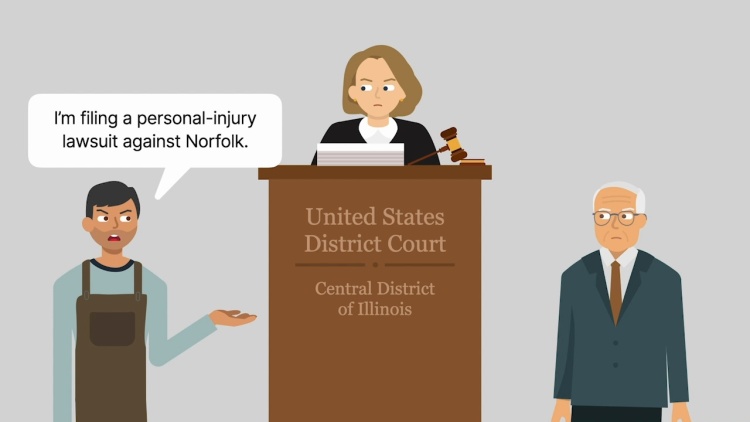Lancaster v. Norfolk and Western Railway Co.
United States Court of Appeals for the Seventh Circuit
773 F.2d 807 (1985)
- Written by Lauren Petersen, JD
Facts
Gary Lancaster (plaintiff) was employed as a mechanic for several years by the Norfolk and Western Railway Company (Norfolk) (defendant). Beginning in 1975, Lancaster worked under a series of short-tempered and physically aggressive foremen. One foreman threatened Lancaster with a broom handle, and another swung a sledgehammer close to Lancaster’s head. These incidents were deeply upsetting to Lancaster, and he became paranoid and, at times, suffered hallucinations. Finally, in 1979, a foreman charged Lancaster while wielding the handle of a pickax, striking the frame of the door above Lancaster’s head. Lancaster was severely shaken by this assault and quickly descended into mental illness. Two weeks after the pickax incident, Lancaster was diagnosed by a psychiatrist as schizophrenic. Lancaster was not fit to work from that time and was not expected to ever be well enough to work again. Lancaster sued Norfolk. During the trial, three experts concurred that the pickax assault triggered Lancaster’s schizophrenia. One of the three experts opined that had the pickax assault not occurred, something else would certainly have triggered Lancaster’s schizophrenia. The judge declined to instruct the jury to reduce damages by the probability that Lancaster would have become schizophrenic even absent the foremen’s misconduct. Instead, the judge instructed the jury that, if it found the railroad liable, the jury should award damages for the injuries for which the railroad was the cause in fact. A jury found in favor of Lancaster and awarded him $850,000 in damages. Norfolk appealed, arguing that the trial court erred in its jury instructions relating to damages.
Rule of Law
Issue
Holding and Reasoning (Posner, J.)
What to do next…
Here's why 899,000 law students have relied on our case briefs:
- Written by law professors and practitioners, not other law students. 47,000 briefs, keyed to 994 casebooks. Top-notch customer support.
- The right amount of information, includes the facts, issues, rule of law, holding and reasoning, and any concurrences and dissents.
- Access in your classes, works on your mobile and tablet. Massive library of related video lessons and high quality multiple-choice questions.
- Easy to use, uniform format for every case brief. Written in plain English, not in legalese. Our briefs summarize and simplify; they don’t just repeat the court’s language.





